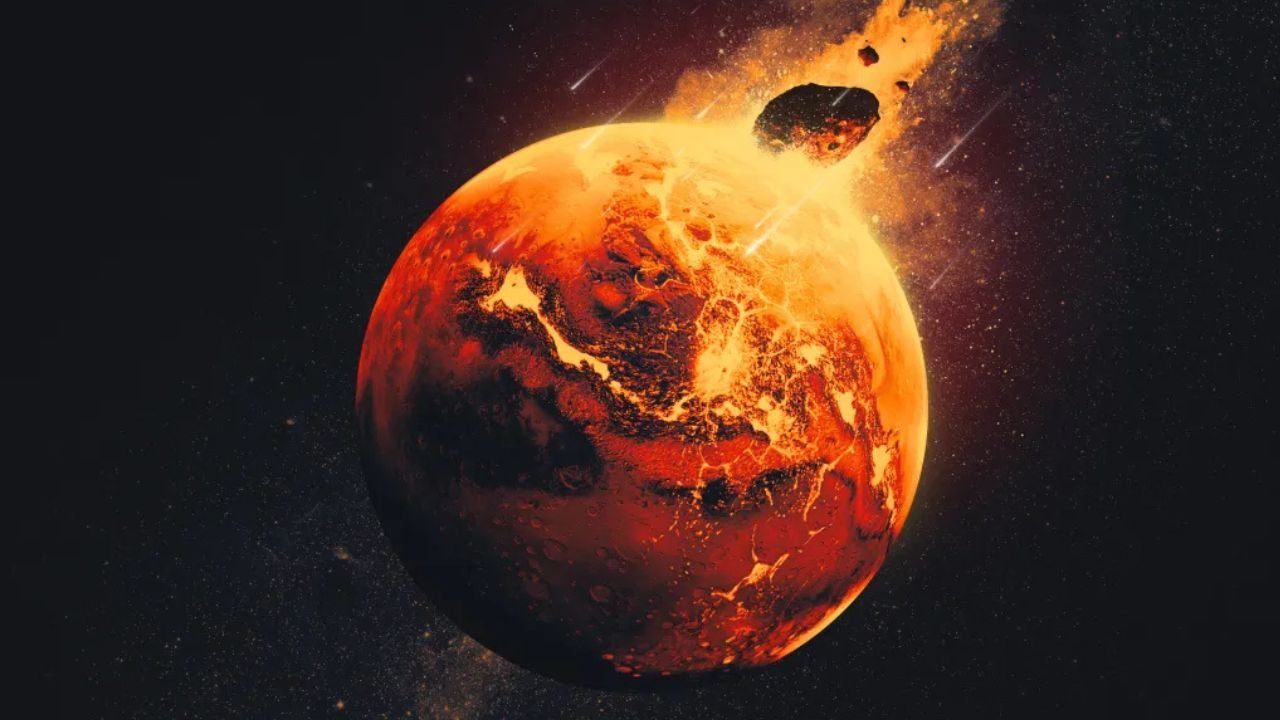Table of Contents

NASA’s Bennu Reveal Complex Origins 2025 spacecraft captured fragments from our solar system’s early memories when it gently touched the surface of Bennu Samples asteroid in October 2020. This groundbreaking mission, which began in 2016 and lasted seven years, delivered 4.3 ounces (about 4.4 ounces) of pristine asteroid materials to Earth in September 20,23. Scientists have fundamentally altered our understanding of asteroids, their evolution, and how they could potentially spread life across the universe.
Journey to Ancient Worlds
NASA’s isn’t just your average space rock. This carbon-rich, roughly Empire State Building-sized asteroid has silently been orbiting the Sun over 4.5 billions years. NASA was chosen as the target by scientists for many reasons, including its proximity to Earth and its composition of organic compounds, water-bearing mineral, and its potential threat to Earth in the future.

Unlocking Cosmic Secrets
Bennu’s samples were analyzed at NASA’s Johnson Space Center, and the results exceeded expectations. Researchers found a diverse mix of organic compounds, minerals and water-bearing materials, rather than uniform material. This revealed a complex history spanning billions years.
This discovery was a revelation, as it revealed the presence magnetite crystals, tiny magnetic minerals that only form when liquid water is flowing. This discovery proved that NASA parent body had extensive water systems. It changed our understanding of the early asteroid environment.
The Origins of Complex Organisms
ITis not a single body. It’s actually fragments of a larger parent asteroid. This ancient world was heated internally to a high degree, melting ice for thousands of years and causing complex chemical reactions.
The phyllosilicate mineral, a clay-like substance formed by rock interacting with water, showed clear evidence of several heating and cooling cycles. These minerals were like geological time capsules that preserved evidence of all the thermal events which shaped Its parent body over its long history.
Dramatic Transformation through Time
Bennu is a fascinating story, but the evidence of its dramatic change over geological time is what makes it so intriguing. The current structure of the asteroid is very different from its original shape. It has been altered by collisions and thermal cycling as well as by space radiation.
These samples revealed signs of space weathering, the gradual alteration to surface materials caused by exposure to solar winds, cosmic rays and micrometeorite impact. This process, which has been going on for millions or even billions of year, is slowly darkening Bennu’s surface and altering its composition.

Some samples had temperatures above 1,000 degrees Fahrenheit. This could be due to the collision which created Bennu, or internal heating in its parent body. Some components were remarkably clean, preserving the original materials that formed the solar system 4.6 billions years ago.
The thermal history of asteroids shows that they are not the unchanging, static objects we once believed them to be. They are dynamic worlds which have undergone complex geological processes over their lifetimes.
Unveiling Bennu’s Mysterious Origins
Scientists have been fascinated by the carbonaceous asteroid Bennu for years due to its rich past and possible clues regarding the early solar systems. Bennu, which was formed over 4.5 billions years ago, is thought to be an “primitive remnant” from when the solar system began. Its rich composition in organic molecules, carbon and water makes it an ideal target for the study of the building blocks that make up life. NASA’s OSIRIS REx mission has revealed its dark porous surface, and given evidence that Bennu could have come from a larger asteroid that was broken up long ago.
Its complex orbital history is also responsible for the asteroid’s mystery origins. Bennu is believed to have been a fragment of a much larger parent body, which was broken up by collisions. Over time, the fragments of this parent body rearranged themselves into its current form. Its orbit is relatively unstable, and swings close to Earth. This suggests that the object could collide with Earth in the future, but this event will not happen for many centuries. Bennu’s study offers scientists a unique opportunity to learn about the asteroid and the processes that formed the early solar systems.
The implications for life and planetary formation
Bennu’s discoveries have profound implications in understanding the origin of life on Earth, and possibly elsewhere in our solar system. The presence of organic compounds and water in asteroid material supports a theory that these ingredients were transported to the early Earth by impacts during the Late Heavy Bombardment Period about 4 billions years ago.
The “panspermia hypothesis” suggests that comets and asteroids may have provided raw materials for life to appear on Earth. Bennu’s samples show that complex organic chemistry was preserved, indicating sophisticated chemical reactions in the early solar systems. This could have led to the emergence life.

FAQs
1 Bennu is different from other asteroids
Bennu is a primitive carbon-rich asteroid that has preserved materials from the early solar system in a state of relative stability for billions of years. Its composition is rich in organic compounds and minerals containing water. This makes it a valuable tool for understanding planet formation and origins. Bennu can be accessed by spacecraft due to its orbit which brings it close to Earth.
2 How did scientists collect Bennu sample without landing on planet?
OSIRIS REx used a “touch and go” sampling method. The robotic arm of the spacecraft was used to briefly touch Bennu’s surfaces between 5-10 seconds. The surface material was stirred using a burst of nitrogen gas. The material was collected in a room for collection. The landing was gentle, avoiding all the complications and dangers that can come from a full-scale one.
3 What evidence suggests that Bennu’s parent body contains liquid water?
The presence of magnetite crystals is a good indicator. Magnetite can only be formed when water is flowing through the rock. The presence of clay minerals (phyllosilicate) is another indication that rock and water have been in contact for a long time.
4 Could Bennu have had life?
Bennu or its parent body has no direct evidence of life. These compounds are evidence of the existence of amino acids, organic molecules complex and other chemical building block for life in early solar systems.
5 What is the age range of Bennu materials?
Bennu samples are 4.6 billions years old, dating back to the formation of the solar system. The samples show evidence of being altered and processed by different events over billions of years, including heating, cooling, and collisions.
Conclusion
The analysis of Bennu sample represents a pivotal moment in our understanding early solar system history, and the origins of life. These grains of cosmic dirt tell a tale that is more dramatic and complex than scientists ever could have imagined. This is a story of violent collisions, flowing water, and sophisticated chemistry that occurred billions of years ago. Scientists will continue uncovering new surprises as these samples are analyzed. Scientists will continue to uncover new surprises as they analyze these amazing samples. Bennu’s contribution to science will last for many generations. Its legacy will not be determined by its size, but how much information it provides about the origins of our universe.
